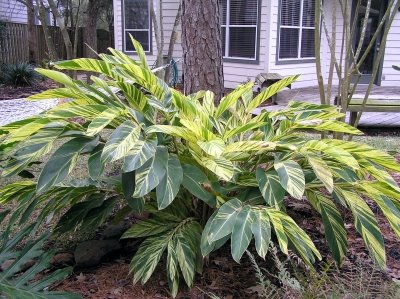
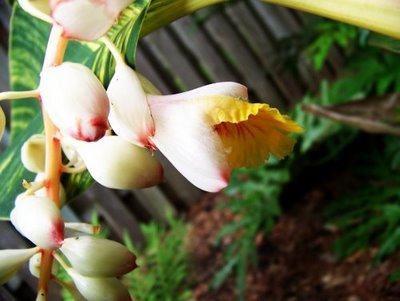
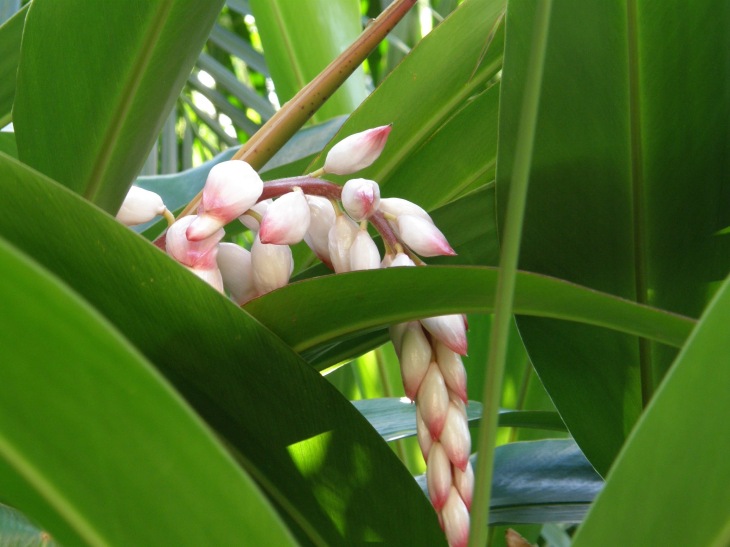
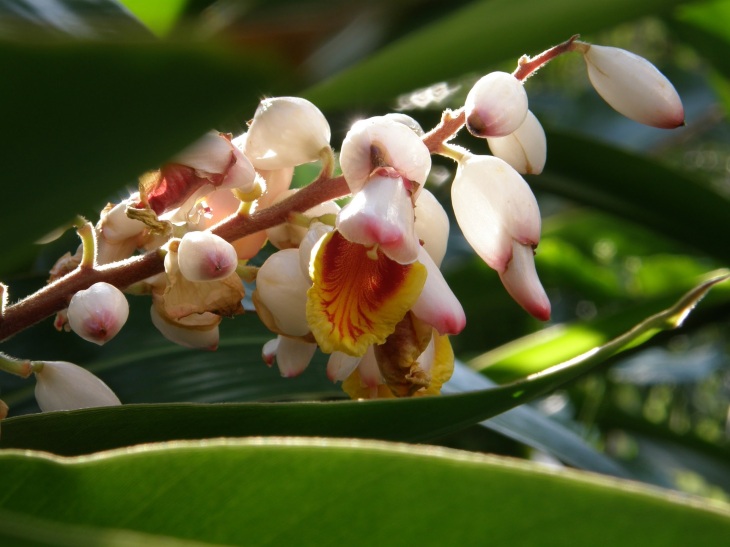
This shell ginger is growing in part shade and about 3′ tall, I also have one growing in almost full shade. The full shade one is much smaller, but just as variegated. The one in the shade is also in a very dry area. So these make good plants to grow in places other plants might not.
It can grow about 6′ tall and can spread to 10′. I’ve only seen them in part shade here and 3′ tall with about 4′ spreads. It prefers full sun and moist soil.
Flowers are light pink and look like sea shells. This ginger is supposed to flower all summer after the second year. This is its second year and the first flowers appeared the last week of May.
This plant was damaged by the frost last winter. After watching it I’ve decided the best thing to do is to just cut the damaged canes back to the ground. They never really recover and look ragged if you just trim the damaged leaves off. Plenty of new stalks will appear in the spring.
Each stalk only flowers once, so feel free to chop them all back at the end of the season or early spring if you are more interested in the flowers than the foliage, or if you wish you can use this ginger like a shrub and leave the stalks in place.
There is a non-variegated version that can handle slightly cooler climates.
I cut the entire plant back to the ground after the cold winter of 09-10. It’s the first week of April and several stalks are showing about 6″ tall.
Extremely drought tolerant, heat tolerant, shade tolerant, cold tolerant – good plant for tough areas.
Propagate by division in the fall.
More Information:
Shell ginger may be the fountain of youth
Garden Web Ginger Forum
Floridata: Alpinia zerumbet

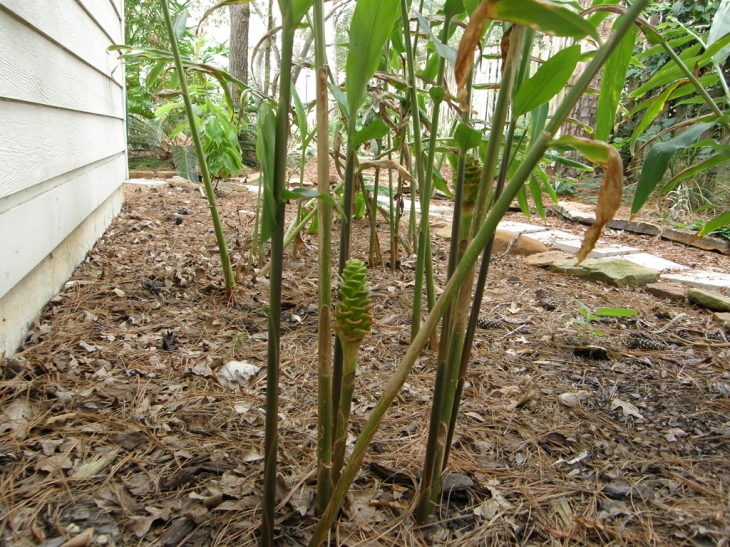




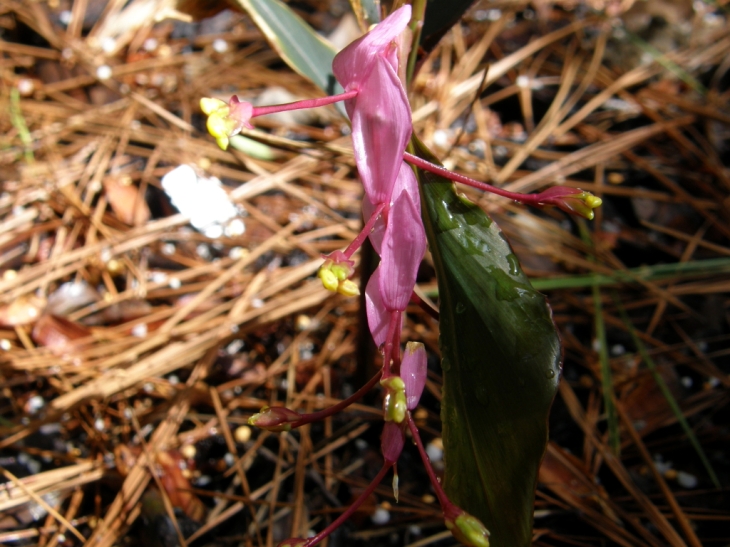
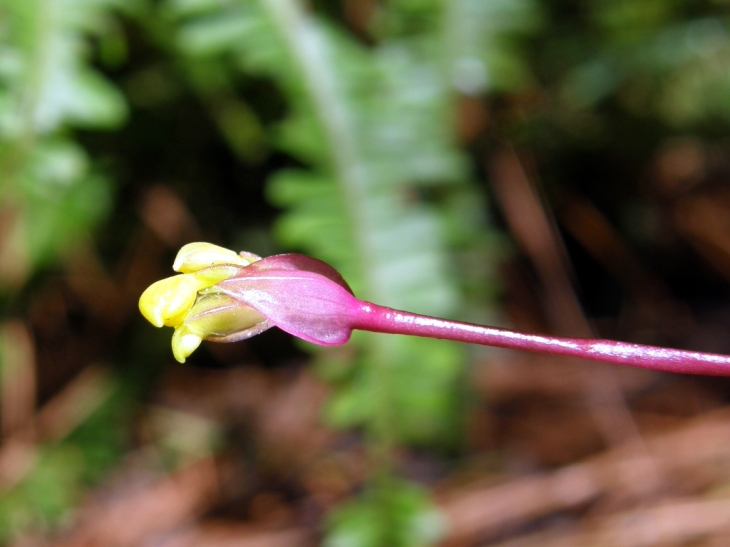
You must be logged in to post a comment.